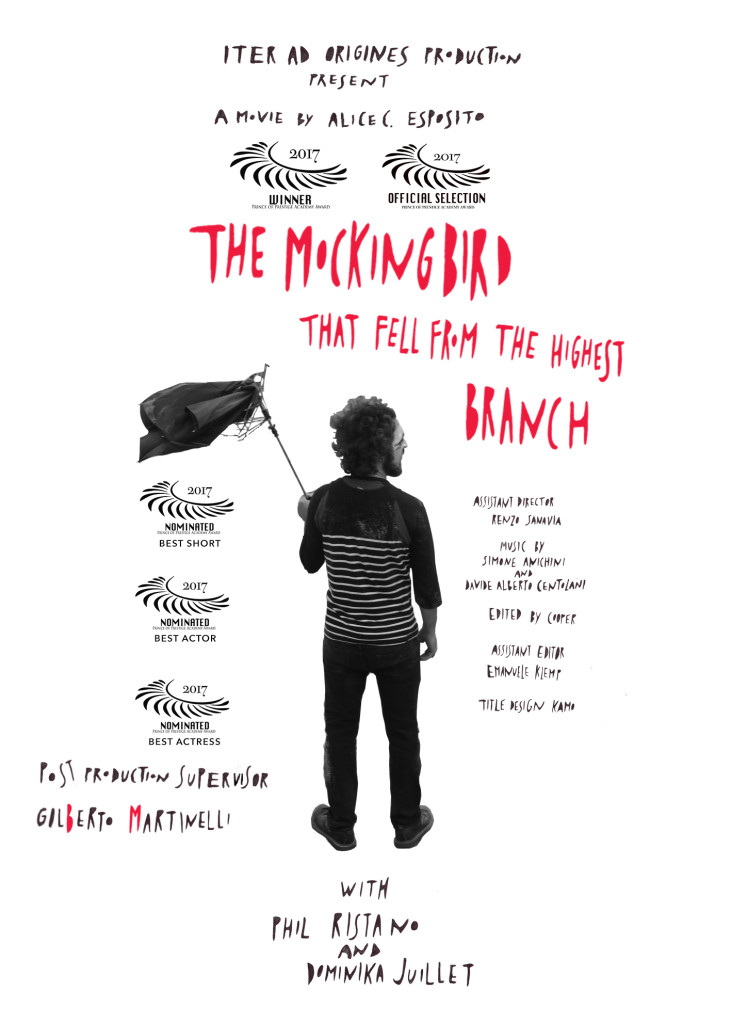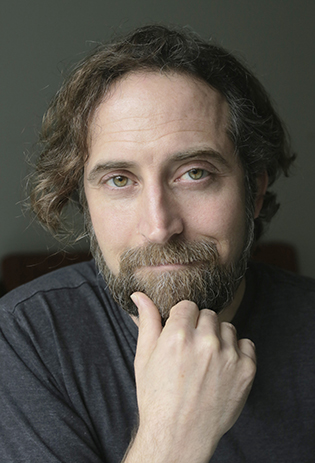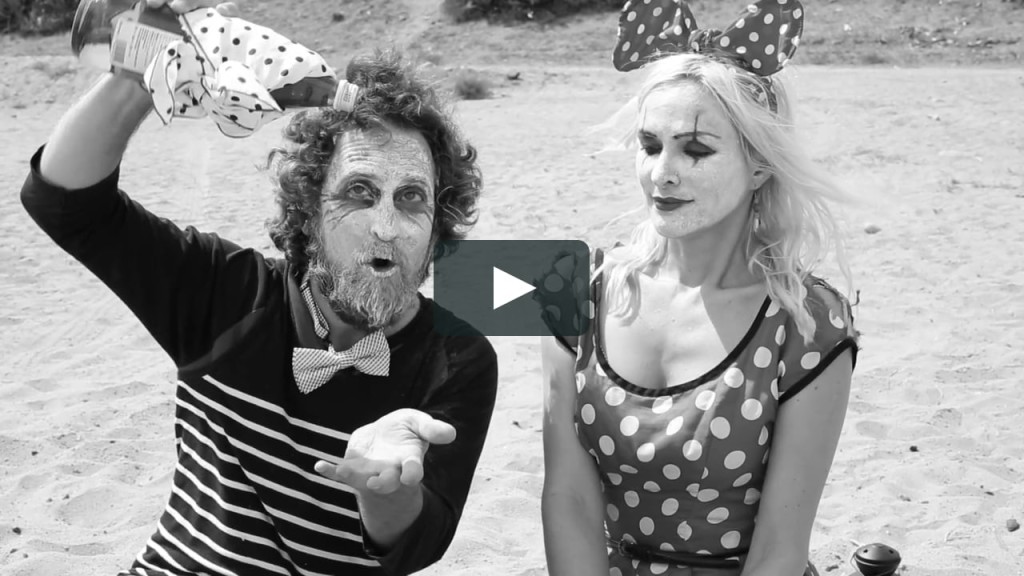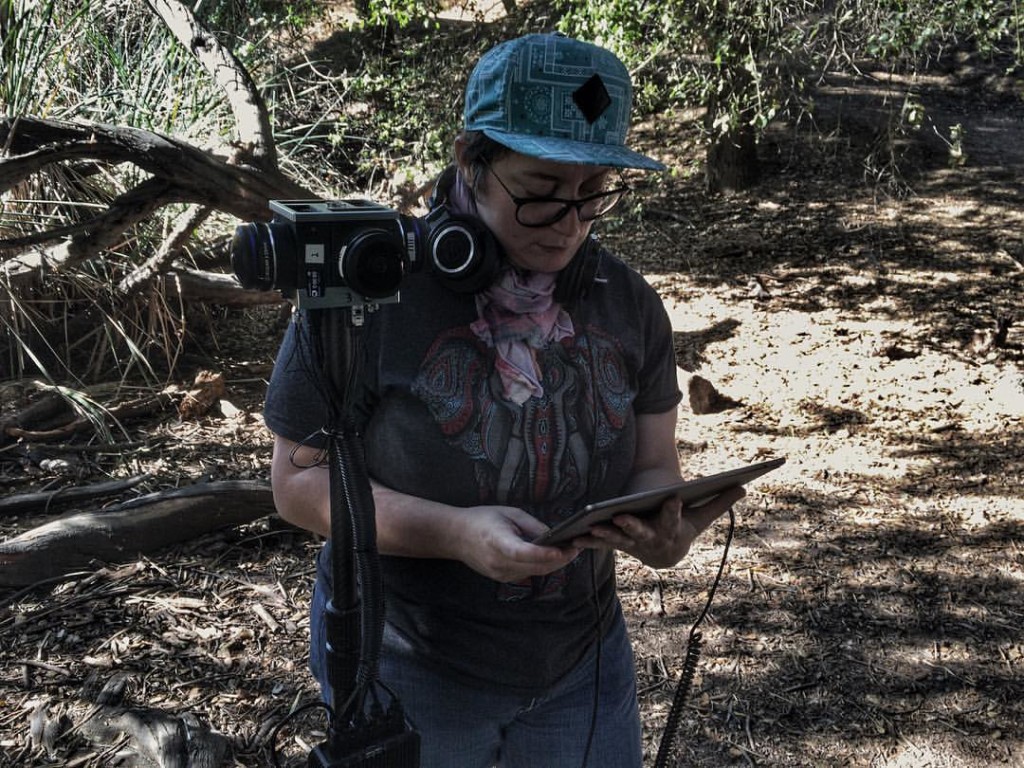Italian-born and Los Angeles-based, Alice Esposito is an award winning photographer and filmmaker, with several film festival success stories in her quiver. Now she’s celebrating a recent win for her short The Mockingbird That Fell from The Highest Branch, which just won Best Comedy at The Prince of Prestige Academy Awards.
The film is a black and white silent comedy inspired by cinema classics such as Fellini’s La Strada, and the comedy of Charlie Chaplin and Buster Keaton. The story: “A cynical, socially inept Mime lives a life of tiny distractions. Yet, even indulging in his smallest fantasies drives him to fits of rage and despair. A chance encounter with the woman of his dreams compels him into a series of humorously tragic attempts at wooing her.”
Esposito says her choice of creating a silent film project was a highly personal one.
“Recently I became hard of hearing, and I had to adapt my way of communicating and understanding other people. Not only did I start to learn sign language but I had to rely more and more on my other senses. In doing so, I started to pay attention more to the expressions and gestures of the people that I was talking to, the little ticks, peculiar traits, and the body language of a person became some of the most important elements of communication for me, more than the spoken language. This movie was born from a need to represent my personal process, an extreme exaggeration of my experience, a way to go back to basic communication,” she reports.
Esposito is also a huge fan of Fellini, Chaplin, and Keaton.
“Being Italian, my roots reside in the classics of Italian Cinema. I remember watching “La Strada” with my family when I was very young so my understanding of it wasn’t as accurate and full as now. Re-watching it after so many years, I got different aspects and layers of the movie that escaped me during my childhood. Chaplin and Keaton were amazing, complete artists. I feel like they had a magical way to show you the tragic pain that is love and life, leaving you almost longing for these conflicting feelings.” She adds “I think my love for them comes from their approach to life and art and how they were able to pass it to the audience. Their works have different layers, and especially Chaplin, has a way to sneak behind you after a big laugh and show you the truth of life. I think the best comedy is a sad comedy – something that both makes you laugh and think at the same time.”
The evocative title was one of the most difficult aspects of completing the production, she relates. ”I remember I was in the car with the main actor, Phil Ristaino, and we started to throw titles around… I recalled that in Italian the mockingbird is also called ‘the mime’ and this bird is known for mimicking the songs of other birds and the sounds of insects. This is how it started to come together. Also, for me, being in love is like being above every physical experience I know, but at the same time when you heart gets broken the impact to the ground is hard. You could say the title serves to represent this feeling with a tragic romanticism and a pinch of irony in it.”
Esposito notes that this film was for her a passage, moving her on to the next step in her storytelling and style. “It was something that I needed to say and see. All my projects change drastically from one to another; I’m very eclectic about my style and my stories. I think my work is in constant change; for me, each story, each project requires a different visual, a different approach.”
In regard to her approach, the director explains that she’s is fascinated by the Japanese term for the awareness of impermanence, mono no aware.
“One director that was able to visualize this concept was Yasujirō Ozu. I love his appreciation and understanding of simplicity. We tend as humans to make a big deal of everything, but I feel like the answer is in the purity of things…You can see this especially in how I move the camera; I tend to keep everything simple almost static. Sometimes the moving camera deteriorates the composition. Coming from a background in painting and photography that is something very important to me.”
Esposito loves working in the short form, and playing with a sense of time. With The Mockingbird That Fell From The Highest Branch she says “There is not much evidence, especially in the beginning, to where and when we are, and there’s not much technology used in this movie. Only with the last few frames do you get an idea of when and where you are.” That said, she plans to work on a feature soon.
This film is very much a tour de force for her lead actor, who she met in a San Francisco coffee shop six years ago. “We discovered we’d moved to LA at the same time. I always loved his work. I’m so honored and grateful for his continuous artistic collaboration. He is an outstanding actor and incredible comedian. We really understand each other. I think to find, not only an actor, but a person who understands you on so many levels, is a rare kind of magic.”
The tragi-comedy nature of the film is a delicate balance, one that starts with a personal perception of the world. She believes her long term collaboration with Ristaino made this easier to obtain in Mockingbird.
“We have a similar way of looking at the world and people around us, so to transmit this idea on screen was very natural. Nothing you see was forced or pushed; I wanted this balance to feel organic. Personally I think this perception that I have of the world came from my family and was heightened by events that happened to me this last year. My mother passed away and this completely changed my vision of the world.” According to Esposito, both of her parents taught her every aspect of life and “that everything has layers. Not all that is sad is sad and all that is happy is happy; it’s a subtle balance, that either you have or you don’t. Luckily I was able to show this on screen with actors that could understand this process.”
The project, for all its delicate thematic and visual beauty was shot in a compact three days across Los Angeles, from Eagle Rock to Malibu.
“I shot it with a Canon 5D Mark III with a 50mm lens and I adapted an old 35mm lens from the 60’s that my father gave me. It really gave the movie a classic feeling.”
While product was swift, post-production took substantially longer, almost a year. “I had amazing people on my team both from Italy and the USA. The composers Davide Alberto Centolani and Simone Anichini were phenomenal. We worked with an ocean between us, and they pulled off a soundtrack that gave the movie the mood and texture that you can’t miss. Sometimes I just put the music on repeat – it’s just magical!”
Readers can view this magic here.
- Genie Davis; Photos provided by Alice Esposito








